Colombia Photoblog
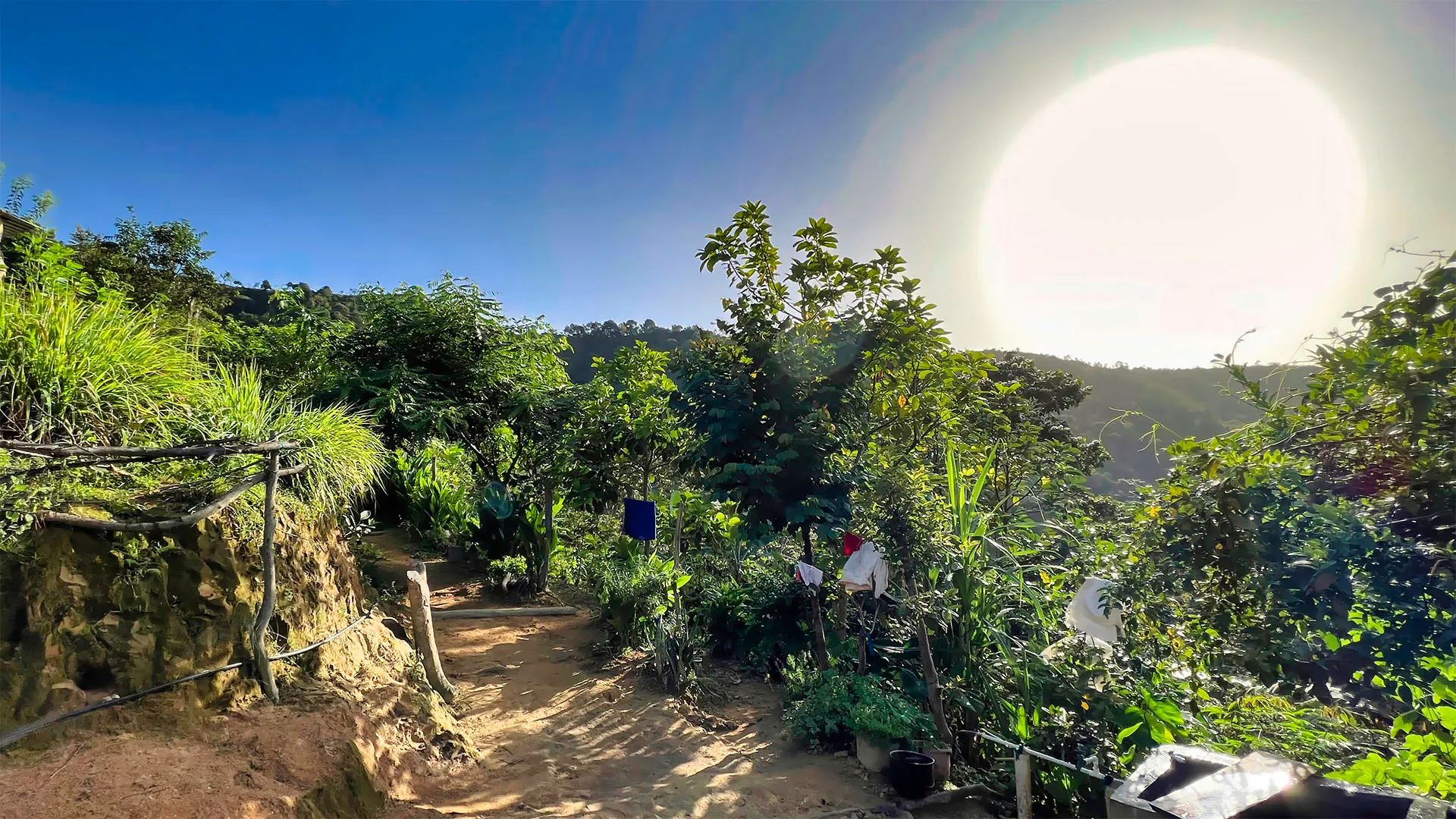
I had been to all of the other major cacao producing countries in South America over the past twenty years save one, Colombia.
Since my first trip to a South American producing country (Ecuador) back in 2003, I have visited Ecuador (again in 2005), Venezuela (once in 2006), Perú (five times between 2013-2017), Bolivia (twice in 2010), and Brazil (three times; 2017, 2020, and 2022). So far.
And while I have connected through Bogotá, Colombia in the past, I have never had the opportunity to step outside the airport before this week – I have always been rushing to catch an international connection.
Setup
In June 2020, my first article as Technical Editor for International Confectionery was on the topic communicating sustainability and one of my guest commentators was Heather Terry, a co-founder of Nib Mor Chocolate, and also GoodSAM Foods.
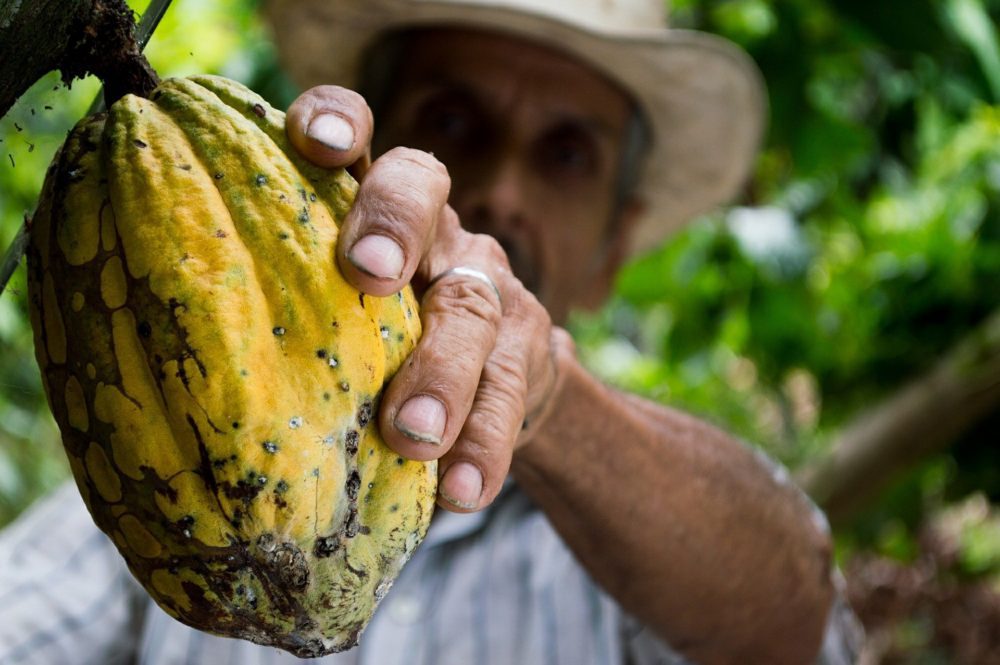
Now, a year later, I found myself invited to travel to Colombia with the GoodSAM team to see their cacao and chocolate sourcing operations up close and personal. Also on the trip was Adam Thatcher of Grace Farms Foods, who was also looking at the work GoodSAM has been doing – and how they were doing it – to help Grace Farms better achieve its mission and goals.

That’s Heather in the middle. Her boundless enthusiasm and humor made the trip a lot of fun, even (especially?) when we were facing very early start times and long days back-to-back.
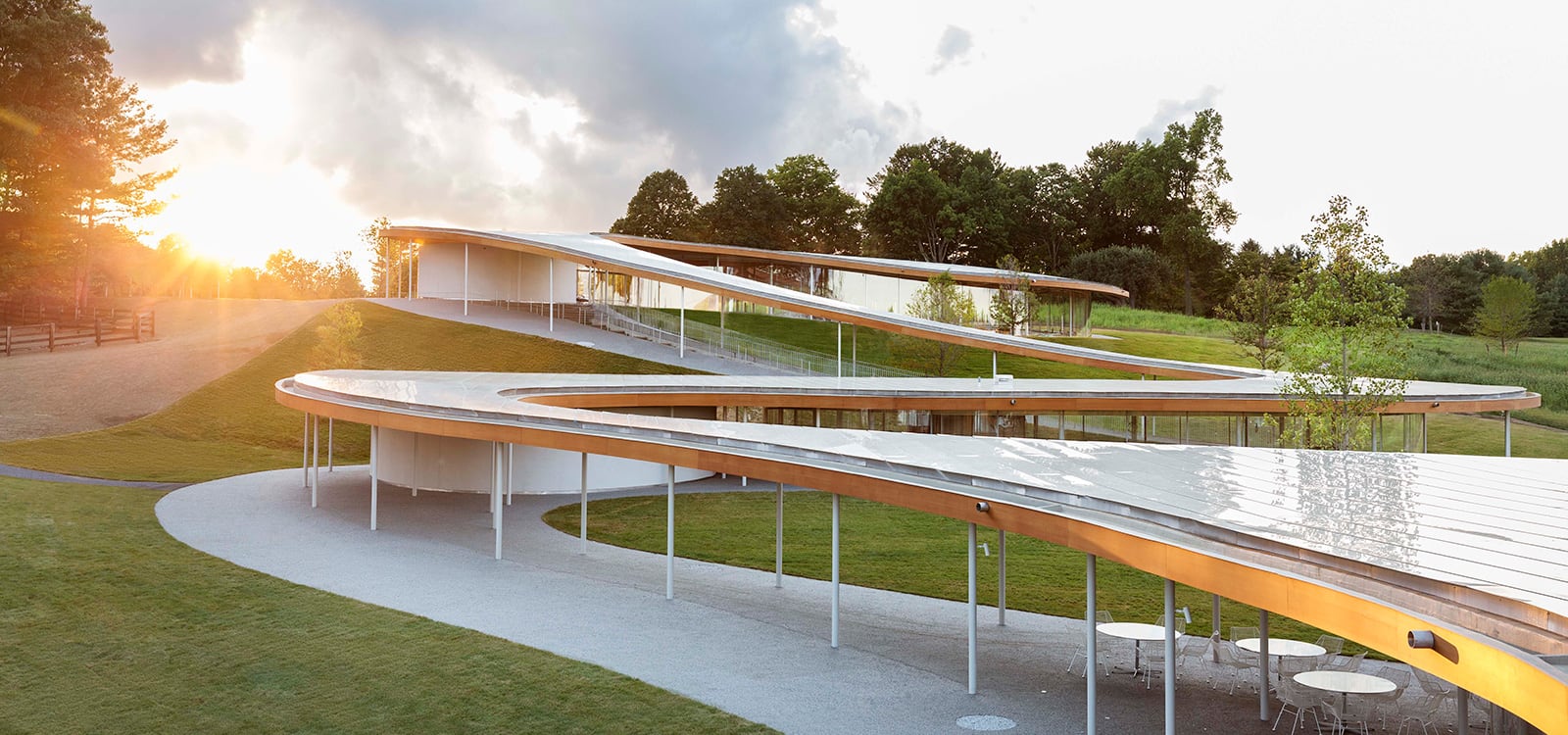
Grace Farms Foods is a for-profit venture by the Grace Farms Foundation.
Those topics – and more – are going to be featured in future articles and posts (there’s a lot to digest).
But right now I have less than twenty-four hours before I get back on a plane for Chocolat Bahia in Ilhéus, Brazil (connecting through Bogotá, ironically). So, this photoblog will have to suffice for now.
The Journey to Colombia
The trip started at JFK on a 7:15am flight to Bogotá where Adam (we were on the same flight) and I were met by members of the local GoodSAM team who would also be joining us.
The next step in the journey was a flight to Valledupar (pronounced vah'-zheh-du-par because the pronunciation of Colombian Spanish is different from the Spanish spoken in Mexico that I am far more familiar with, because of course it is), in the department of César. A quick drive and a stop for a dinner of unironically gourmet comida tipica followed by a drive to the hotel – built on the grounds of a cultural interpretation center for the indigenous Arhuaca peoples – where we were spending the night.
The center is a truly inspiring and restful spot and we are lucky to be there as it is on ancestral lands and guests must be invited in.
Thursday
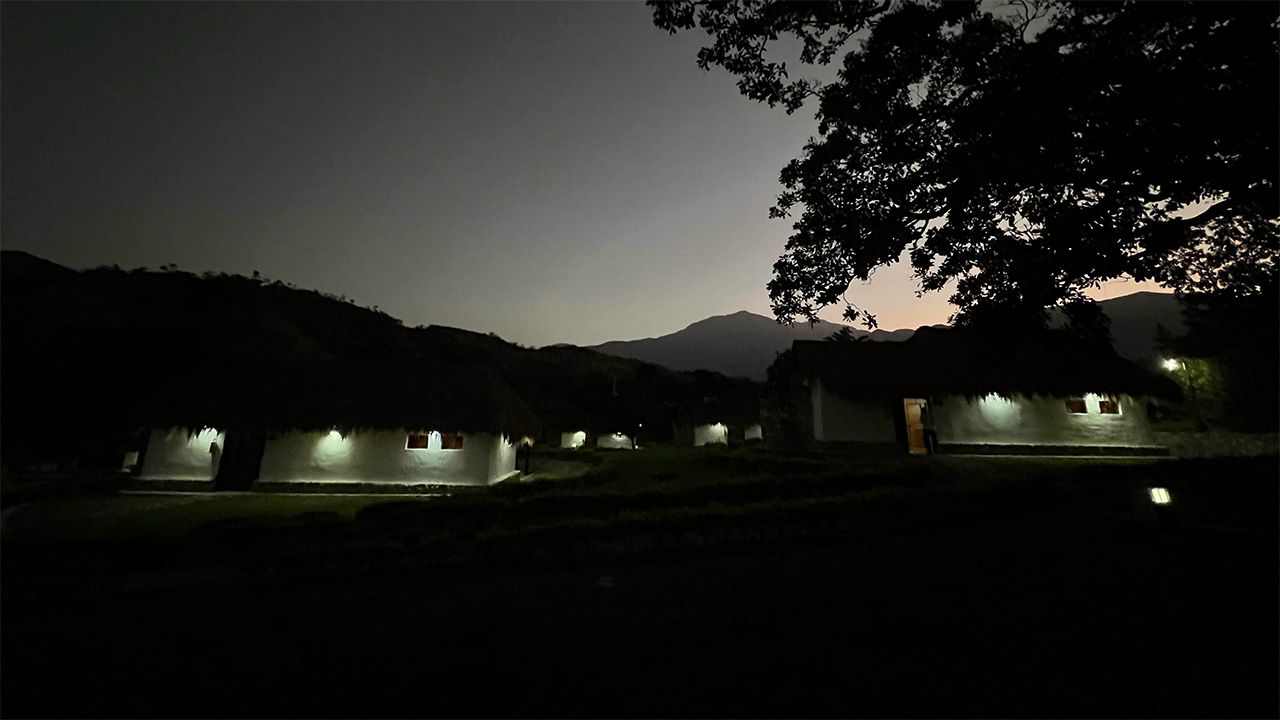
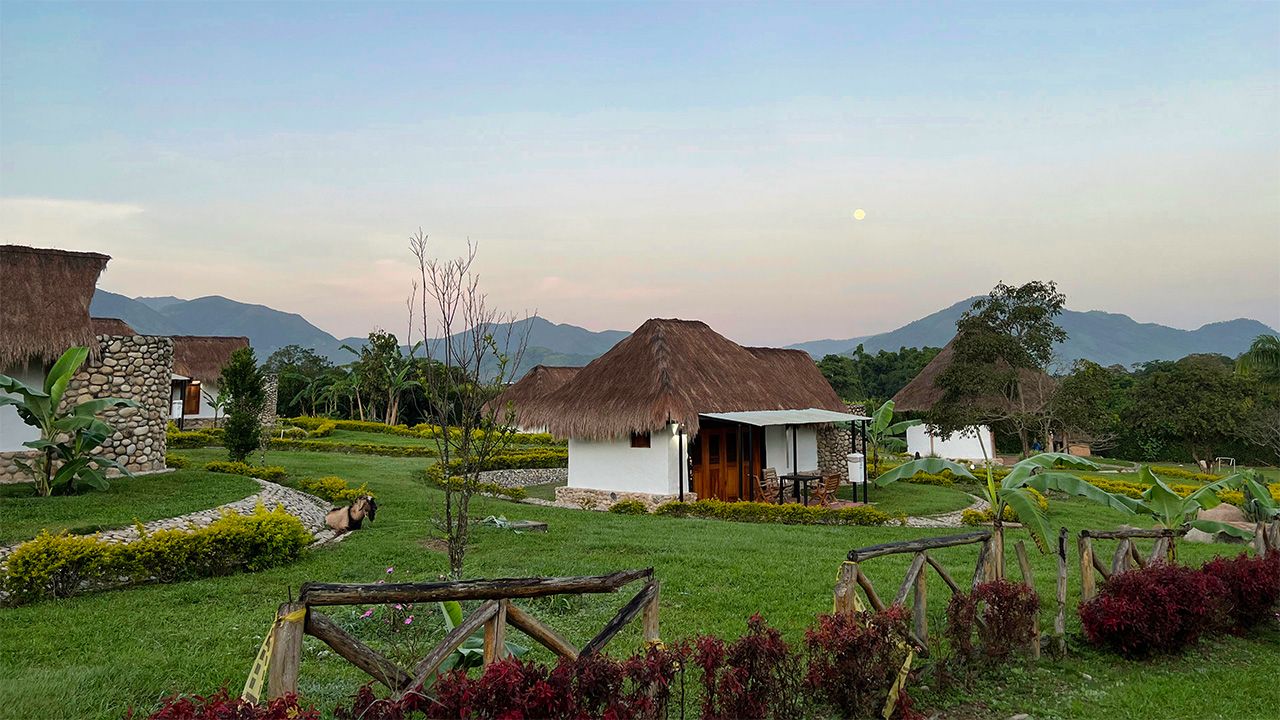
At sunrise, we were awakened not only by the cocks’ crows but also what sounded like rifle shots. Before the times set on our alarms.
What we thought were firearms being used turned out to be fireworks fired off in celebration of the Virgin Carmen – the patron saint of drivers. We were also treated to a spectacular full moon. We were scheduled to depart at 6:30 am and, fortunately, there was (good!) coffee before we hit the road.

Our first stop was the home of Donã Elia, who is a member of the Tayronaca Association working directly with the farmers. Our guides for the day are from GrupoTap, a company that commercializes the products produced by Tayronaca and other associations. Doña Elia’s family has been growing organic coffee for some time but is starting to explore growing cacao because of the effects of climate change.
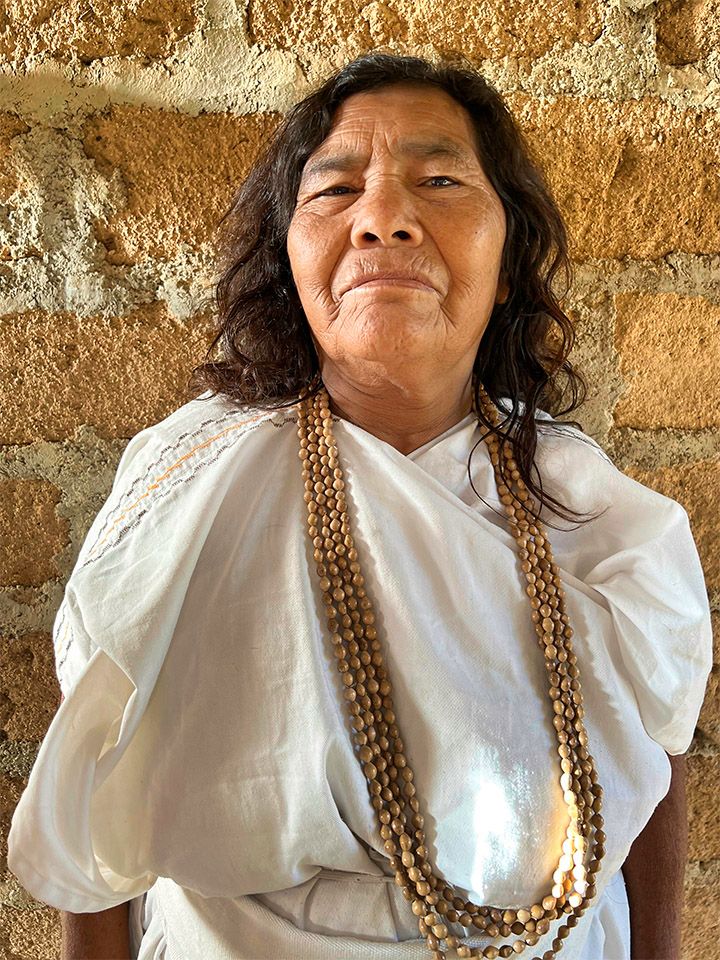
Matriarca Doña Elia.
What immediately struck me was the genuine warmth of the reception by Doña Elia and her family to the GoodSAM team. If there is one thing I have learned over the past two decades of traveling to producing countries and observing various attempts at direct trading models, it is that making personal connections is a (the?) key aspect of the process, in addition to making long-term commitments. This was not their first visit by the GoodSAM team to see Doña Elia and the mutual respect and trust between the family and the team was immediately obvious, heartfelt, and genuine.
One real question I have is how to scale this high-touch approach to have an impact on thousands and thousands of smallholder farming families – and run a profitable business?
Again, this is a topic that will be explored in-depth in other posts and articles.
After leaving Doña Elia’s, we headed north deeper into the Sierra Nevada de Santa Marta to visit an indigenous community of Arhuacos where GoodSAM has been working to improve a road and a school, improving access to education by making it easier to get to school (La Escuela Corazones Abajo) but also through improving the infrastructure – from the sanitary facilities to the building roofs and more.
This required driving an hour once we left the main road through the community of Chimila to get to a trailhead where we would go by burro-back for another hour to get to the school.
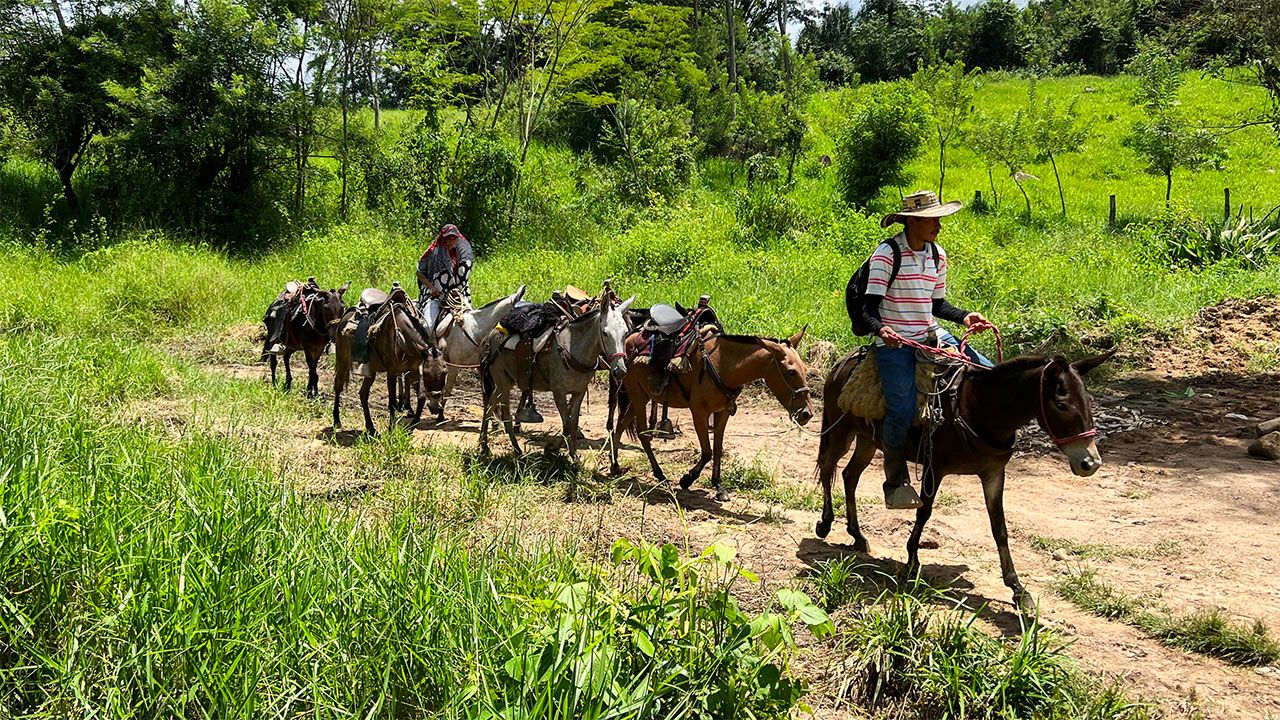
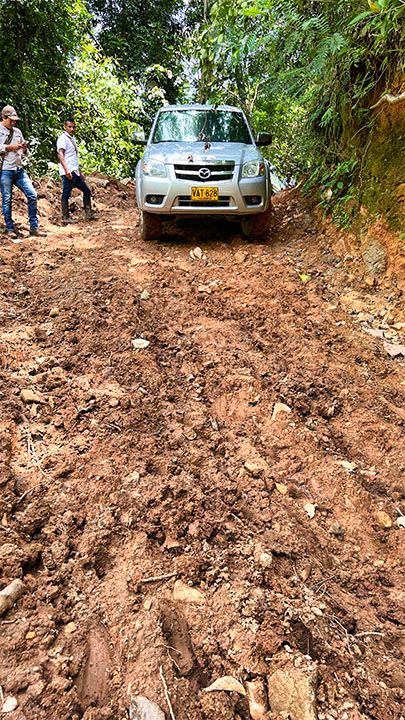
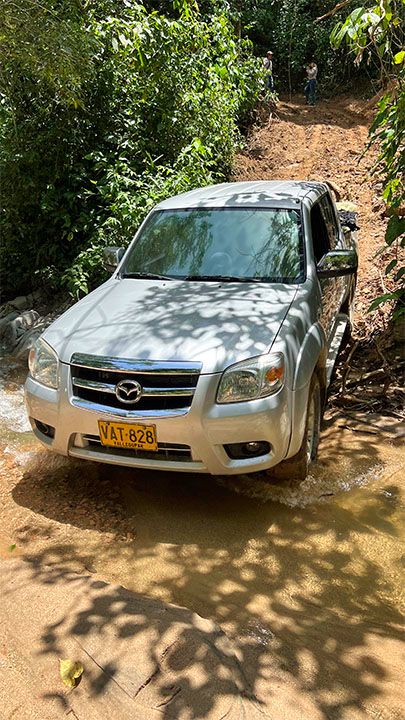
[L]: Our burros; [C]: Muddy slopes where even 4-wheel drive vehicles dare to tread; [R]: No trip would be complete without getting stuck in a stream crossing. Because. Of course.

It is impossible to express in words how beautiful the Colombian countryside is. I will let this picture speak for itself.
My hosts told me that Colombia, when total land area is taken into account, has the highest biodiversity index in the Americas. I can certainly believe it.
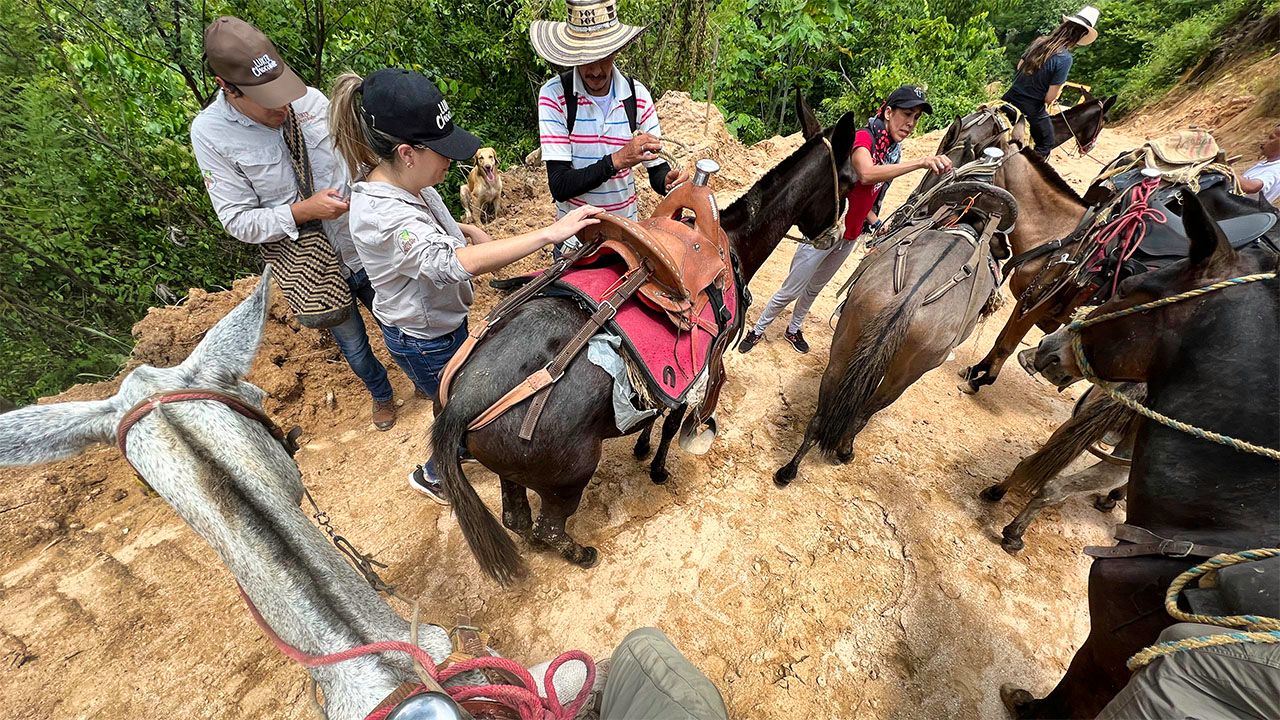
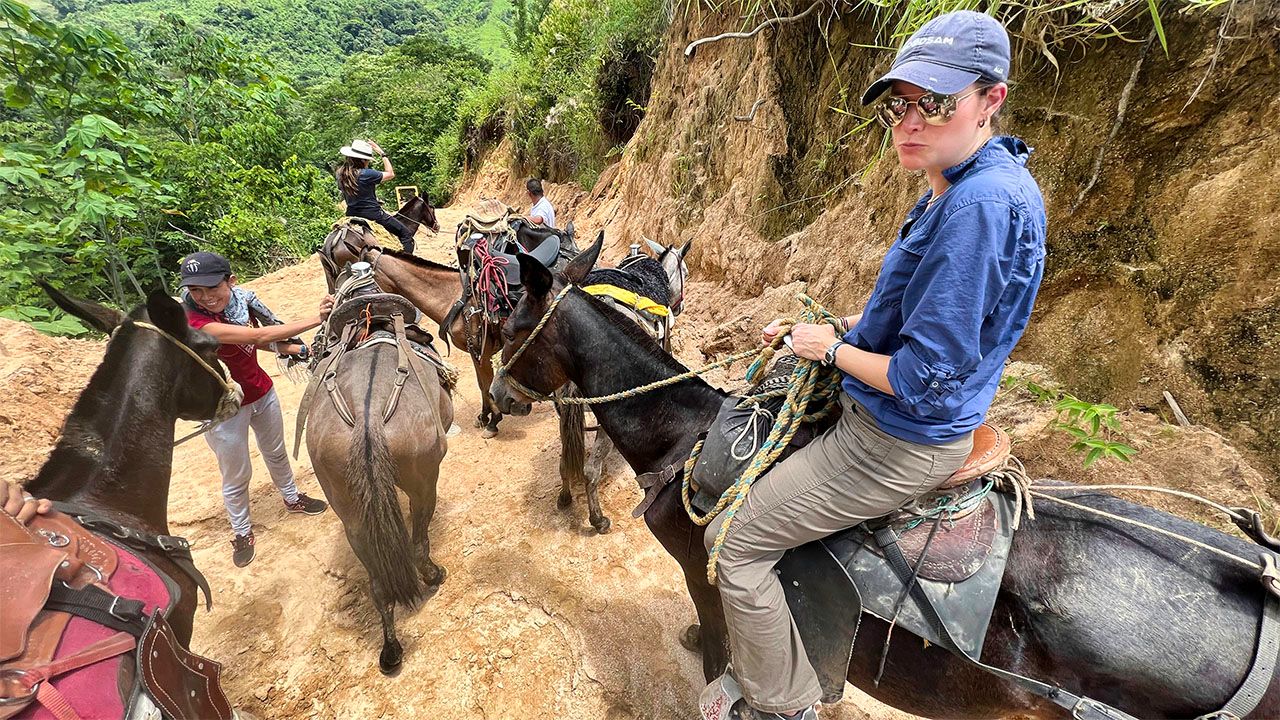
[L]: I am seated on the back of my burro, which I named Burro Mars. That’s Heather on the right with an uncharacteristic squinch on her face.
I have to admit that it has been a long time since I’ve been on the back of a horse and much longer since I’ve been on the back of a mule. So I was more than a little apprehensive, mostly because I figured it would be obvious to Burro Mars that I was an inexperienced rider, making it more difficult for both of us. True to form, I nearly pitched over the neck of Burro Mars on the first steep slope (in the first three minutes!) and an errant branch deprived me of my brown leather baseball cap. Heather’s squinch may have been because she’s had experience riding her burro before and it has proven to be a challenge to control. (On our way back Heather’s burro, whose name I cannot recall, threw a hissy fit and turned down the wrong trail at a fork with Burro Mars following suit. Fortunately, an experienced handler got the burro calmed down and got us back on the right track before we strayed too far.)
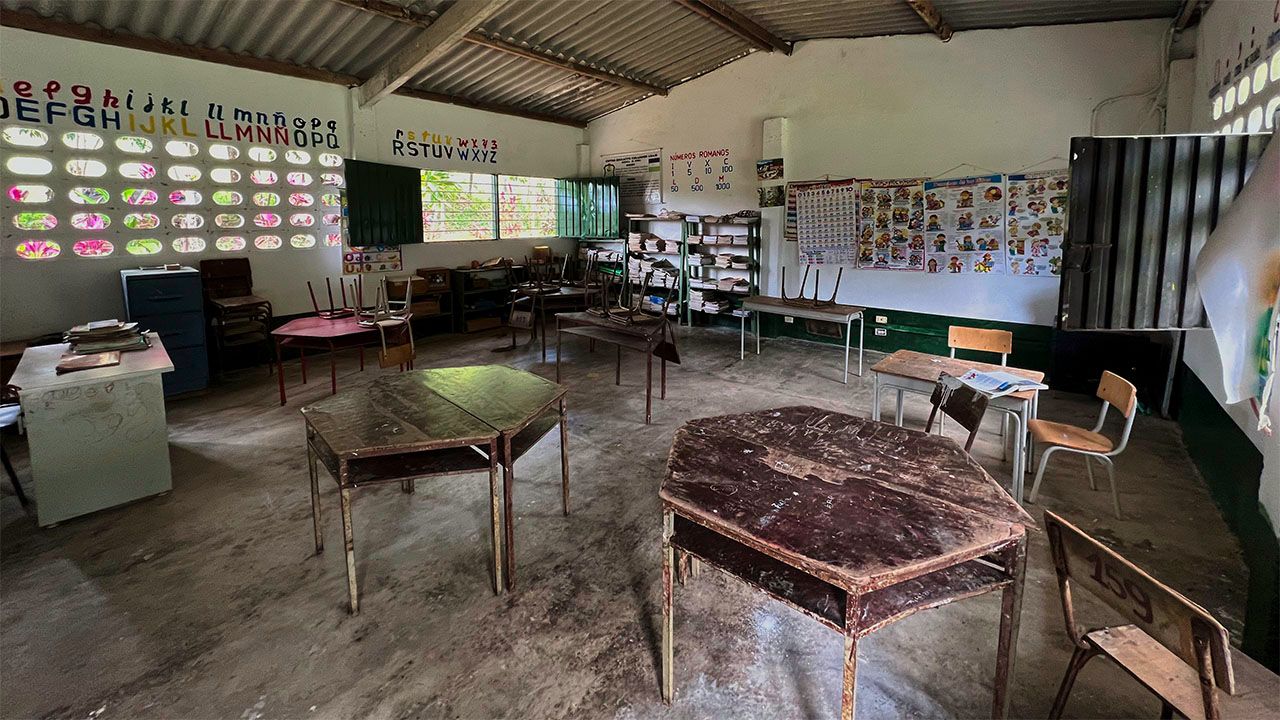
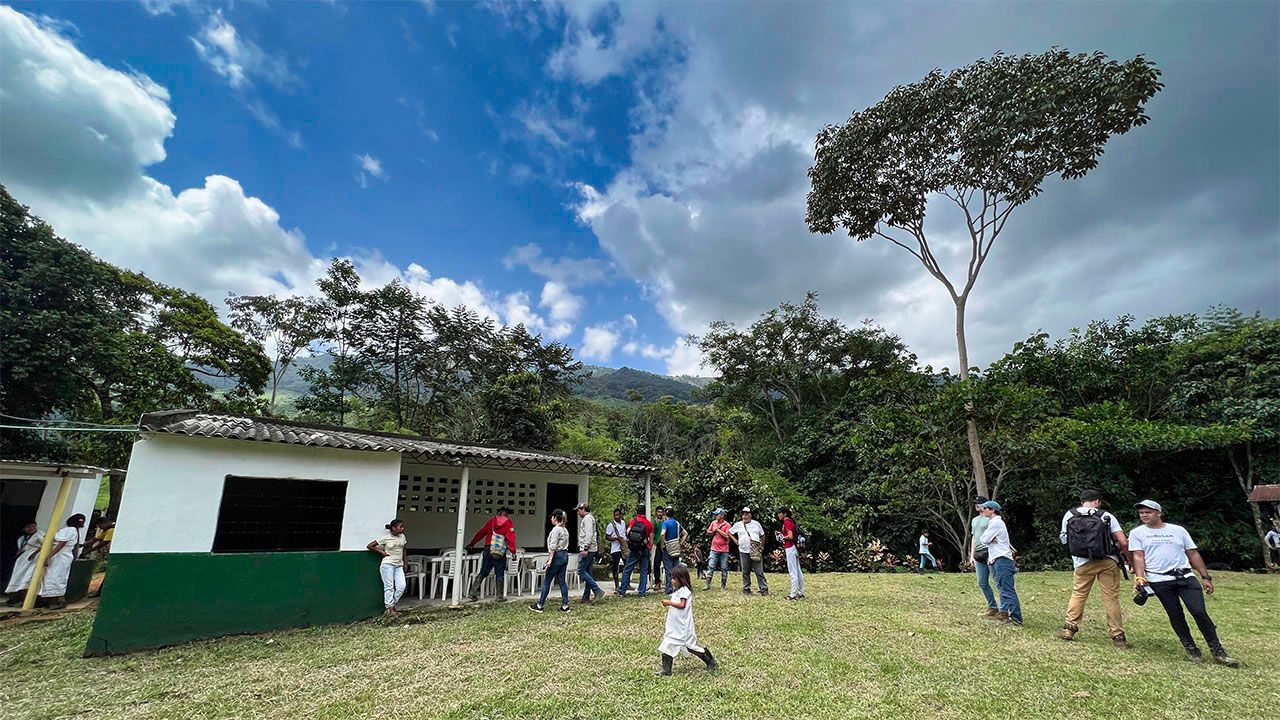
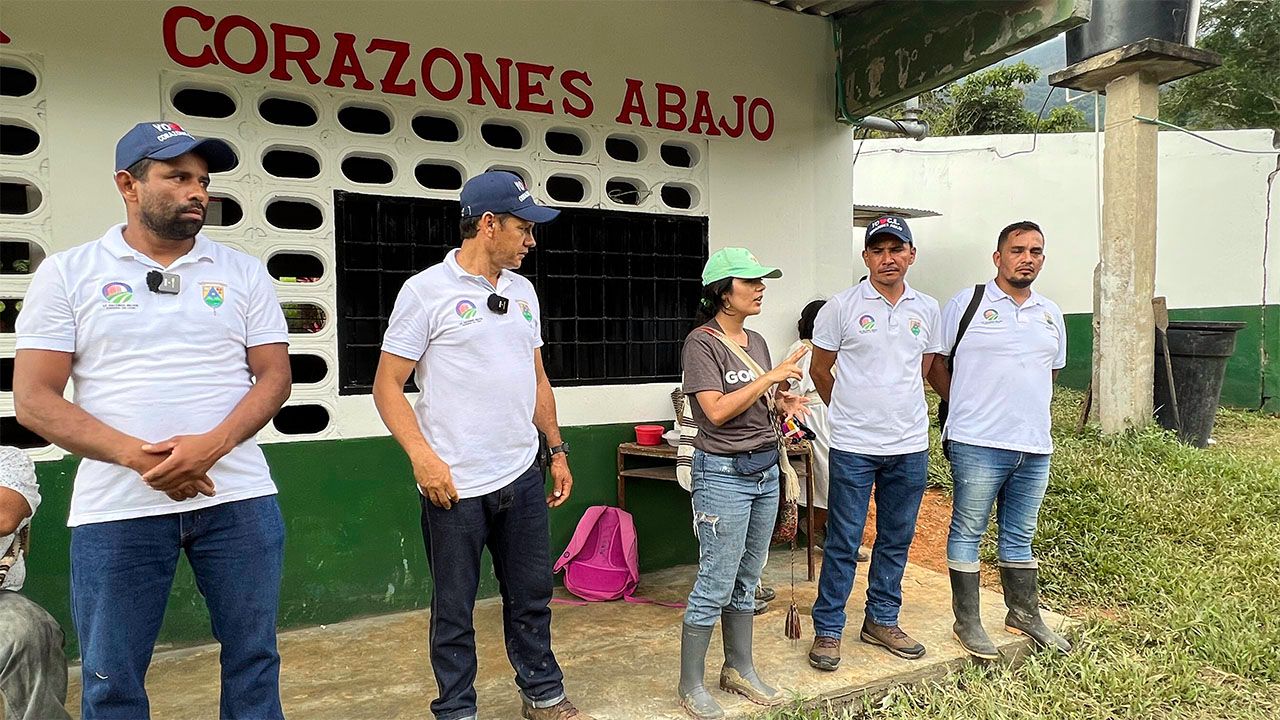
[L]: The interior of the school room; [C] Looking at another building in the school complex from the football pitch with one of the most beautiful views; [R]: Four of the teachers talking about the impact the investment in the community has made (that’s Sara in the center, translating for those of us whose Spanish is woefully inadequate – which includes me.)
La Escuela Corazones Abajo has a roll of about 30 students, and the network of sixteen schools in the area has a role of slightly over 300 students, working with students from about (in the US what would be roughly) first through ninth grades. After lunch and an informal football match, we mounted the burros again to start the two-hour trek back to the main road, where we headed to the town of El Copey to spend the night as sunset was fast approaching.
Friday
One of the challenges with trips like this is they tend to be jam-packed and tightly scheduled, making a breakdown or other interruption a real challenge to stay on schedule.
So, even though we got out the door before 6am on a trek along La Ruta del Sol through Santa Marta to Minca, there was an accident on La Ruta – a tractor-trailer overturned dumping a load of structural steel beams across the road – completely blocking traffic for nearly two hours.
Minca is known for ecotourism and it’s a pretty typical small town in the countryside apart from the presence of the relatively huge percentage of businesses catering to tourism. We went to Minca so that Adam (from Grace Farms) could meet with coffee farmers who were a part of the Association Asoprosierra which has been growing organic coffee in the region for more than twenty years. Specifically, we were there to meet Emerita Barbosa, a micro-entrepreneur and member of the women’s committee of Asoprosierra. Of the twenty members of Asoprosierra, eight are women, and they have created – and sell – their own brand of coffee, Alma Libre.
Emerita sells part of the crop she does not offer to Alma Libre to the Association. With the rest of her coffee crop, she roasts and bags (grinding some of it) for sale under her own brand to tourists visiting Minca. Like many smallholders there is diversity of food crops on Emerita’s farm.
One thing that is very interesting about the internal coffee market in Colombia is that the National Coffee Federation (which is responsible for the Juan Valdez branding) guarantees the purchase of every bean that any farmer presents to them. The work of the Federation and associations like Asoprosierra – technical, commercialization, and other support – is provided at no cost to the farmers and is paid out of US$0.06 (six cents) tax per pound on all coffee that is exported.
We were treated to some of Emerita’s own brand of coffee and I was really quite surprised at the complexity of the flavor and how it changed as the coffee cooled down. Really pleasant balance of flavors with strong notes of cocoa on the nose which became evident on the tongue in the aftertaste with a pleasing level of acidity.
And have I mentioned that the views were/are spectacular?
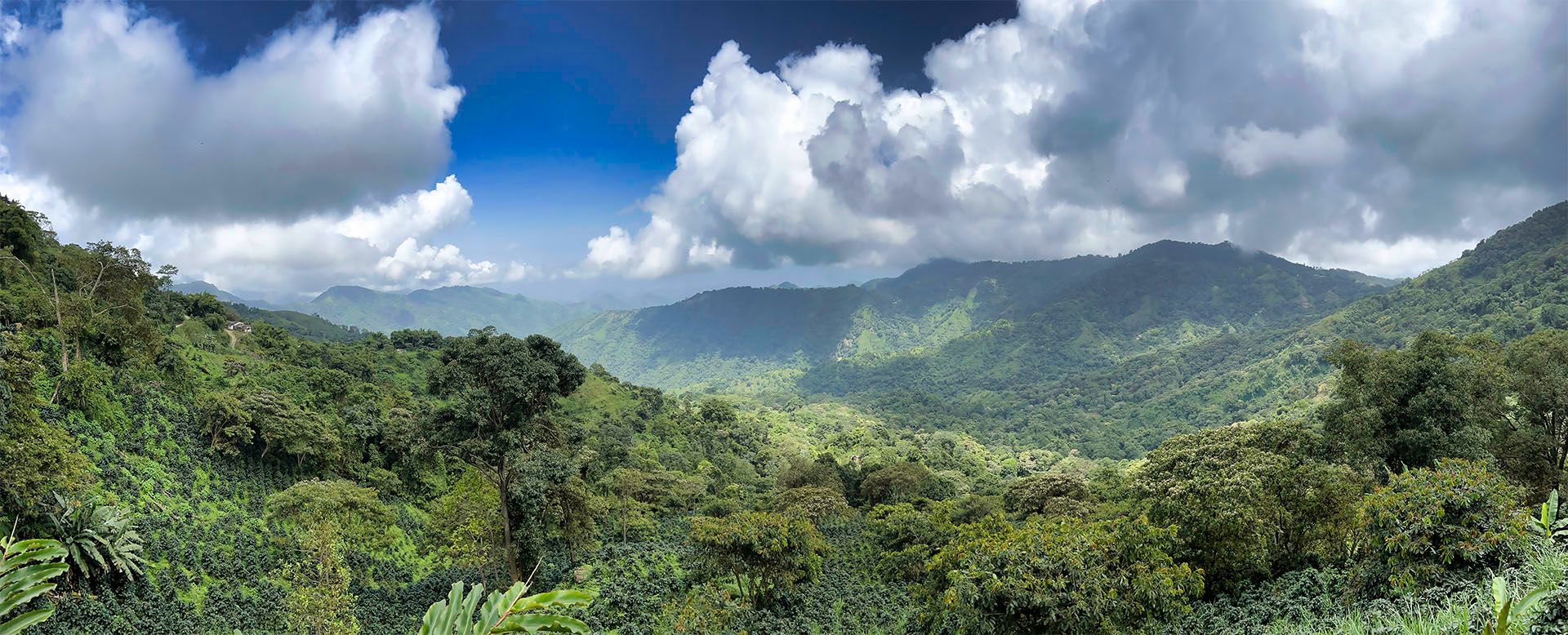
If you look closely (lower-left quadrant) you’ll see coffee growing. Where we were going was another 100 meters higher than the elevation this picture was taken from.
After coming down the mountain, we had lunch in Minca and visited Coficosta – which specializes in organic coffee. In Minca they operate a specialty coffee shop with a roasting plant in-house where one of the staff gave a tour of the roasting facility. Unfortunately, electrical problems meant we weren’t able to actually see a roast.
By this time I realized that I’d been in Colombia for more than twenty-four hours and I had not tasted anything chocolate. I was determined to have a Colombian hot chocolate, and this was on the Coficosta menu so I ordered that instead of an iced coffee beverage. One thing I had already learned was the difference between traditional (unsweetened) and campesina-style (sweetened, often with panela) beverages. In Colombia, hot chocolate is a staple beverage throughout the country and can be had made with water only, milk only, or a combination of the two. At Coficosta it is made with milk and the steam wand on the espresso machine, topped with latte art. A gourmet version to be sure, but a very tasty balance of the natural bitterness of the 100% chocolate and the sweetness of the milk used. Plus – latte art.
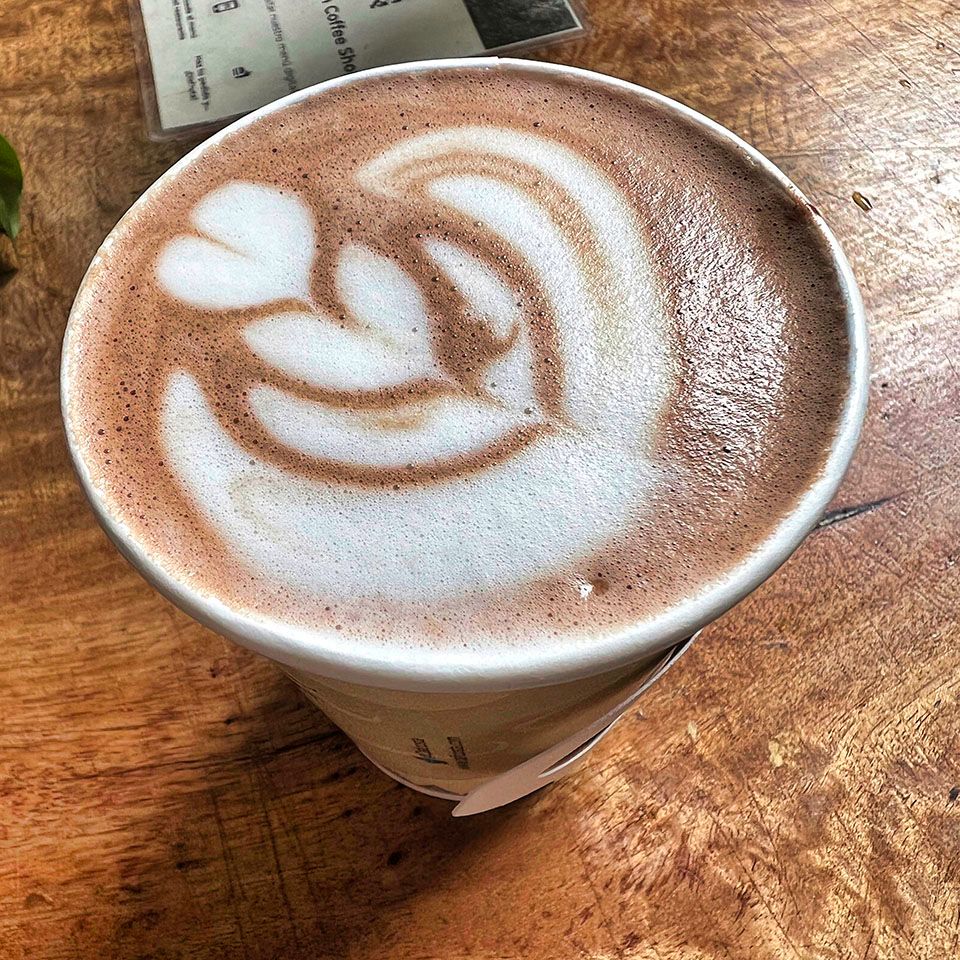
Although much of the discussion so far has focused on coffee, it’s also the case that cacao is coming to Minca as the temperature rises. As coffee moves up the mountain, cocoa is being planted below, in what has previously been planted in coffee.
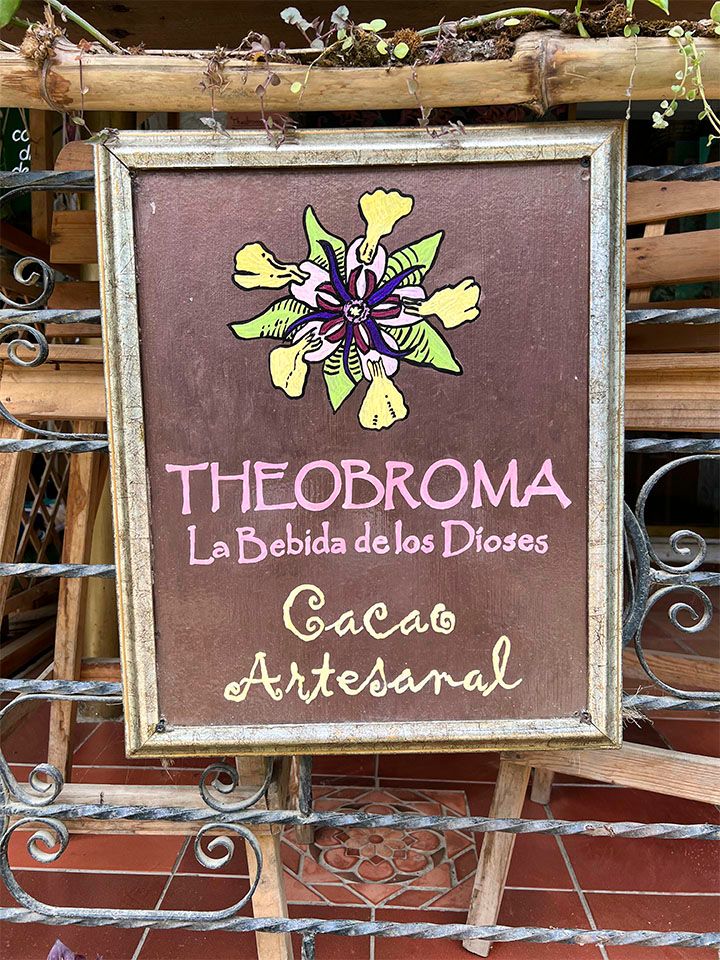
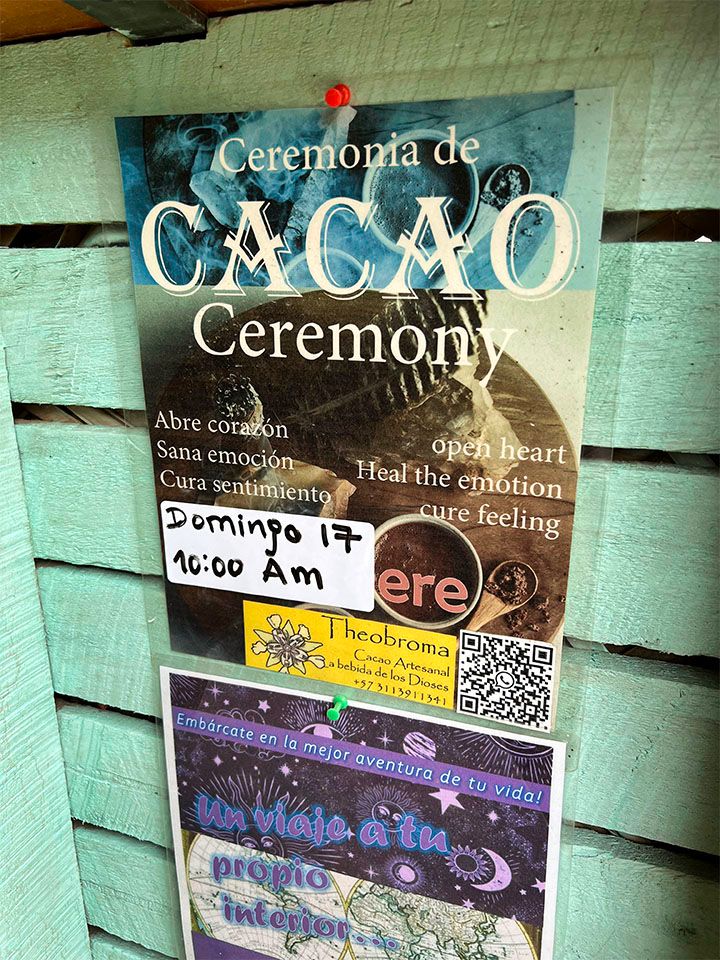
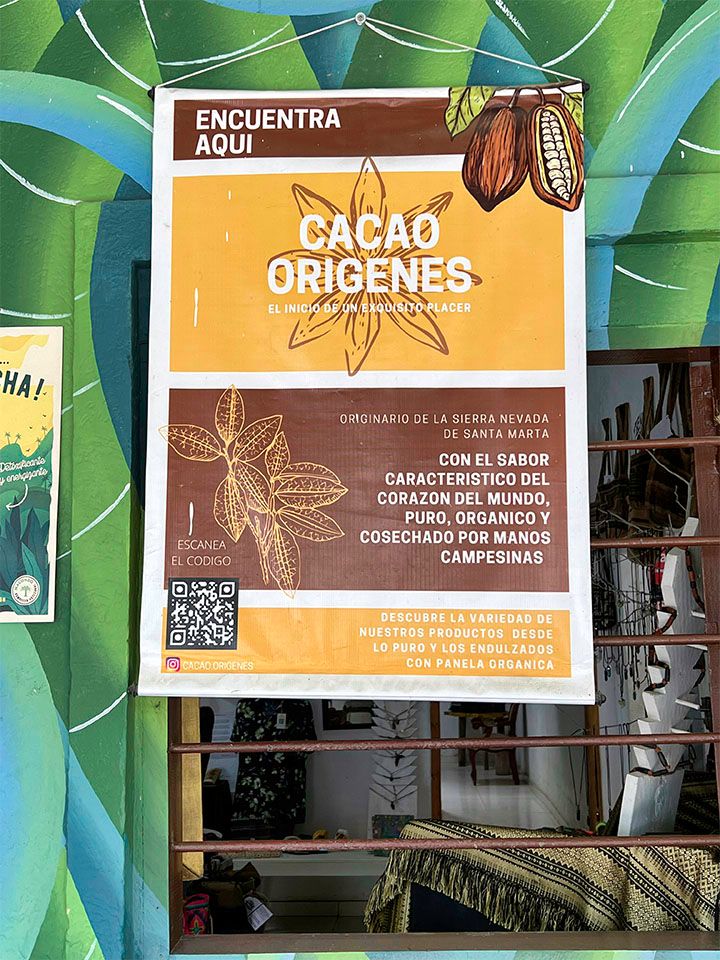
Three cacao-related signs in Minca. Cacao and chocolate are everywhere along the street where most of the restaurants, shopping, and tourism offices are located.
After a filling lunch in Minca (black bean soup, grilled fish, rice, and fruit juices) we got back in the car and headed to the airport in Santa Marta to catch a flight to Bogotá where we would spend the night.
Saturday
The call times got progressively earlier and earlier each morning.
This morning, our flight from Bogotá to Monteria leaves at 06:00 which means we have to be at the airport before 5:00 to check in and head to the gate which means leaving the hotel around 4:30. (I just yawned simply thinking about how tired I was when the alarm went off Saturday morning.) Fortunately, the hotel we stayed at in Bogotá had actual hot water (first on the trip – same in Brazil, in fact) in the shower, and ran a twenty-four kitchen operation so café tradicional (not the best so far by far, but, caffeine; but the hot chocolate was campesina-style and too sweet for my taste) was available at that time in the morning and drunk without complaint.
At the airport in Monteria we were greeted by a driver and a toooooo-small vehicle (for our party, anyway, it was an Expedition so huge in most other respects), so we clambered in with our luggage piled next, on, and around us. This situation lasted only until we stopped at a ferreteria to get a length of rope to tie about half of the bags to the roof rack. With a little breathing room we headed down the road to the village of Caribia, where we would visit the graduation ceremony of a project in entrepreneurship sponsored by Casa Luker, the second-largest cacao/chocolate company in Colombia, the primary cacao sourcing and manufacturing partner of GoodSAM’s in Colombia, and one of the hosting partners on the trip.
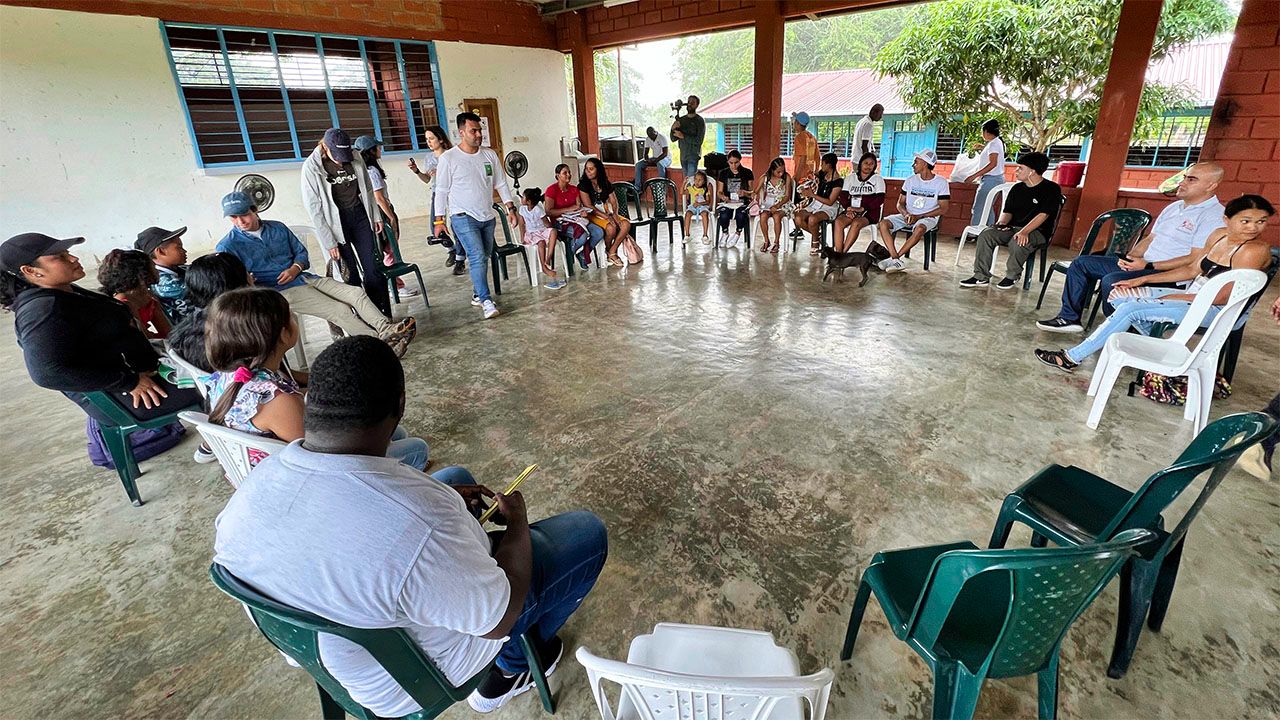
Literally just moments before we started the program the skies opened and it started to rain. Hard. It was so loud on the metal roof it was very hard to hear what was being said.
Each of the students in the program made a short presentation in English (none of them had any level of fluency with the language just a few short months ago). Once this was complete several of the students pitched their new business ideas – from an innovation center to the expansion of a small family farm specializing in a local type of pepper to the expansion of an arepa business – to the trio of American visitors, including me. While none of us were looking to decide to invest then and there, Shark Tank-style, there is serious consideration on how to find the necessary support for these entrepreneurs.
Perhaps the most inspiring part of the afternoon was the realization that just five years ago this kind of gathering was highly unlikely due to terrorism and narcotics-related violence. Luker and cacao have been instrumental in lowering the incidence of those kinds of violence. The best example of this is to notice the number of small children sitting next to their mothers. Where there once was outright fear, there is now hope.
Perhaps the most obvious way (to an outsider anyway) that this hope is expressed is through highly colorful public artworks, including the one below, which is made with bottle caps.
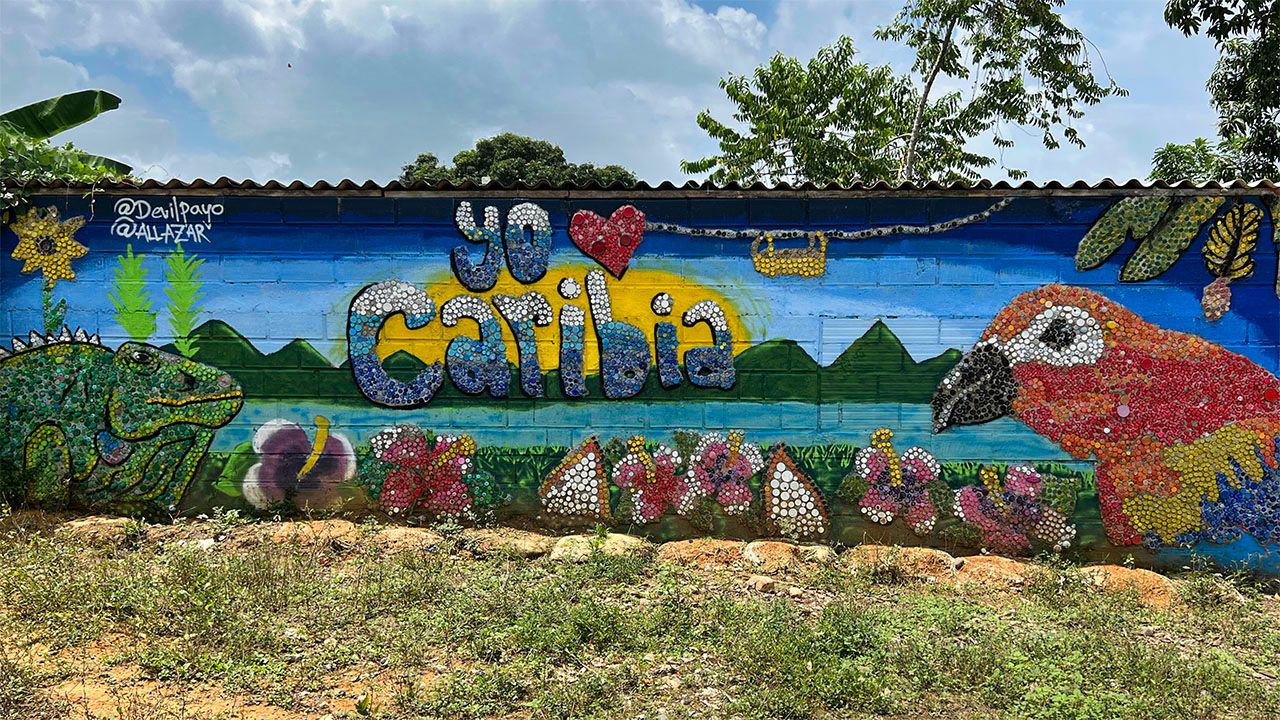
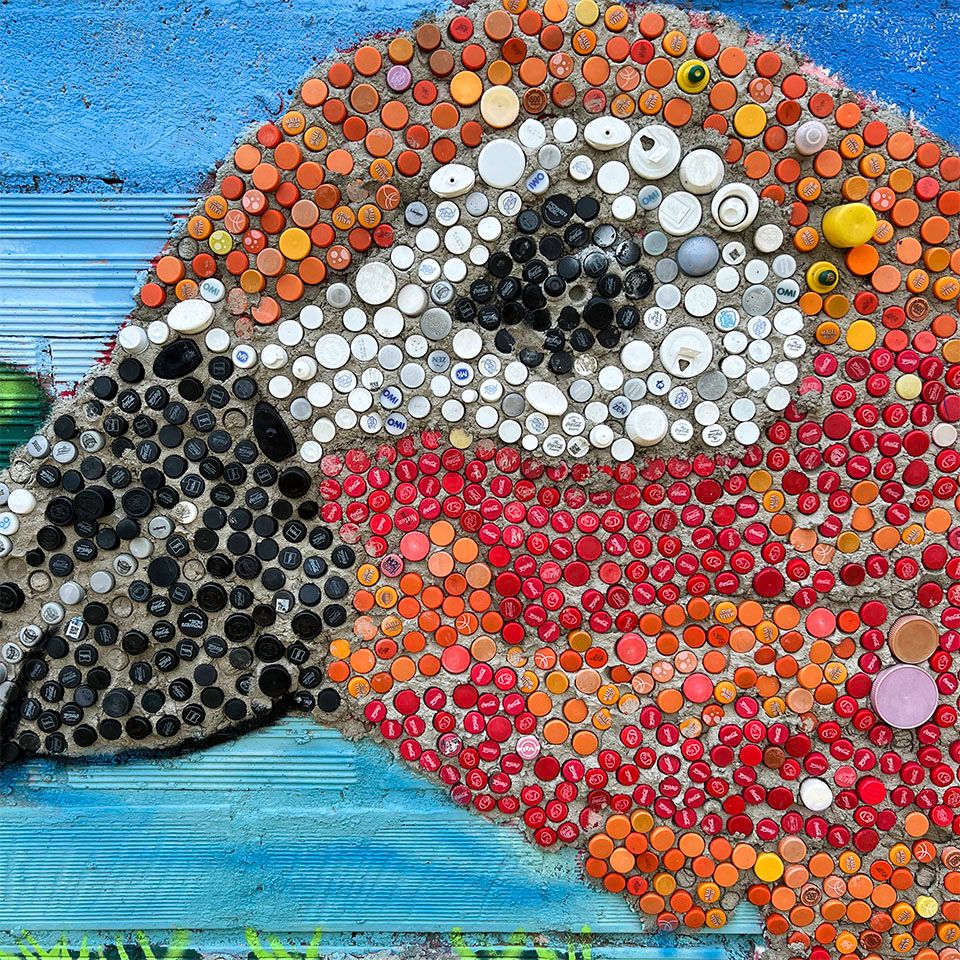

Next on the agenda – almuerzo, lunch.
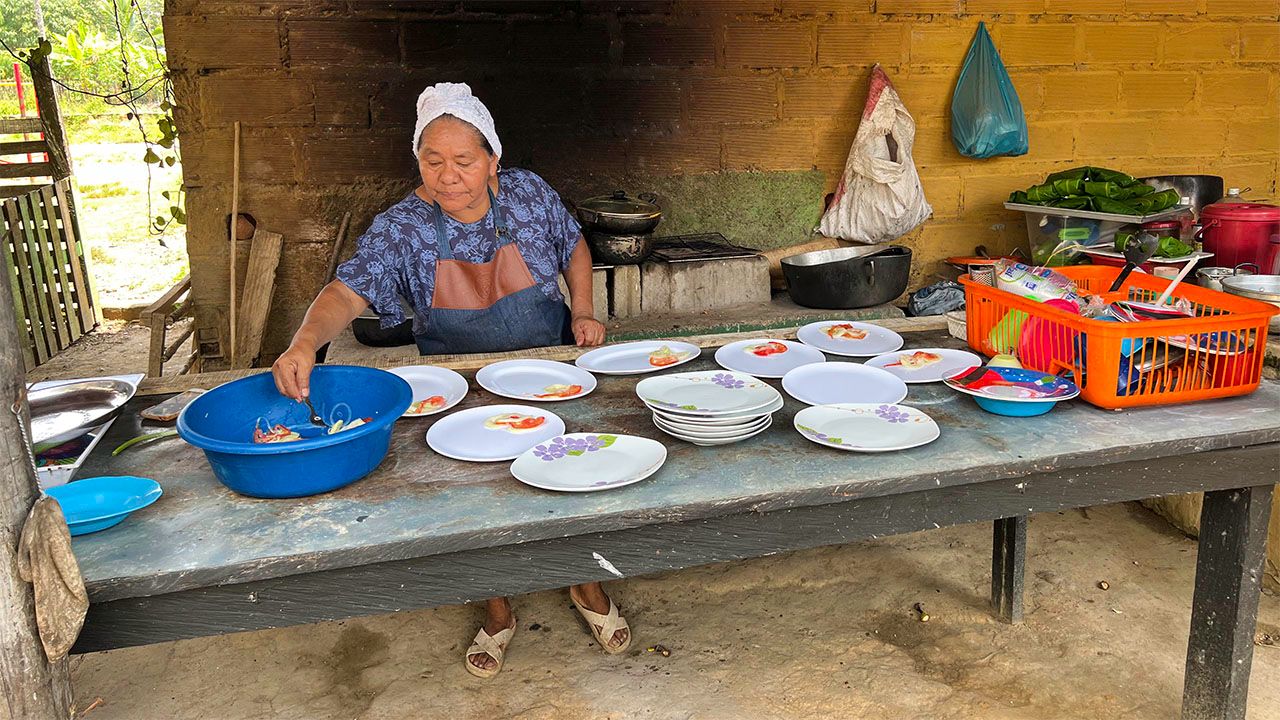
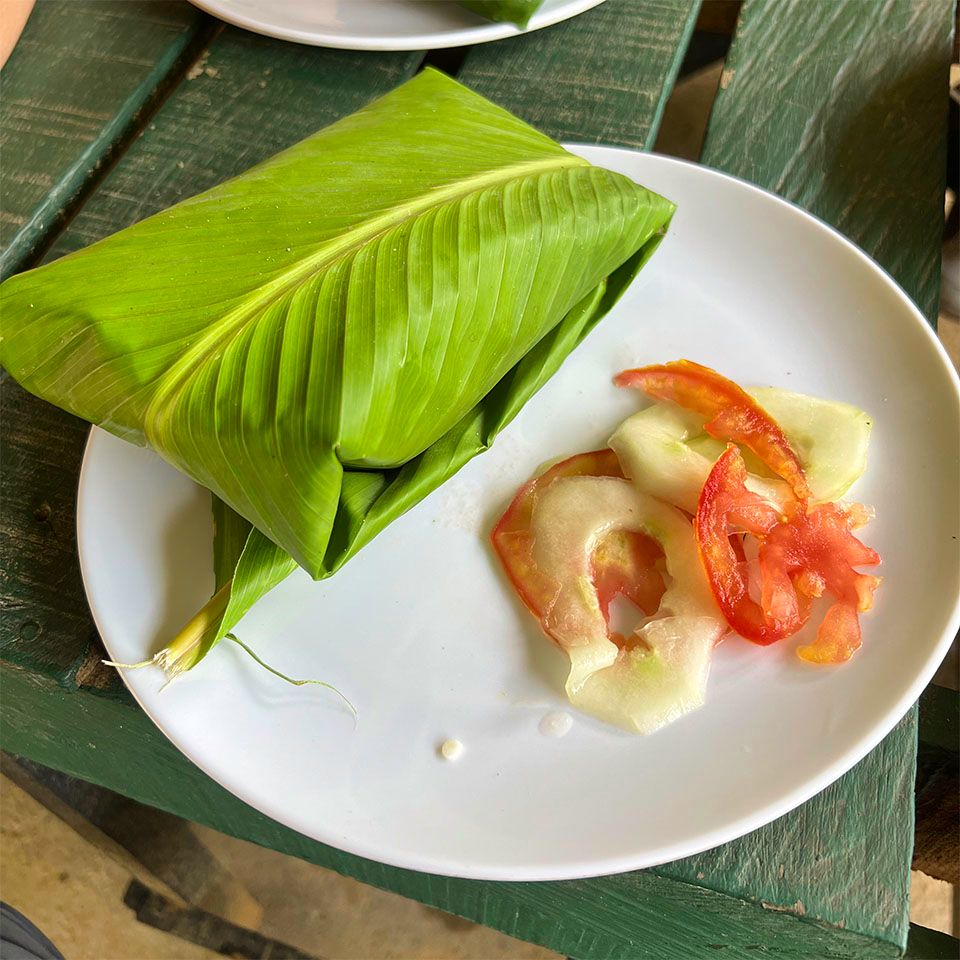
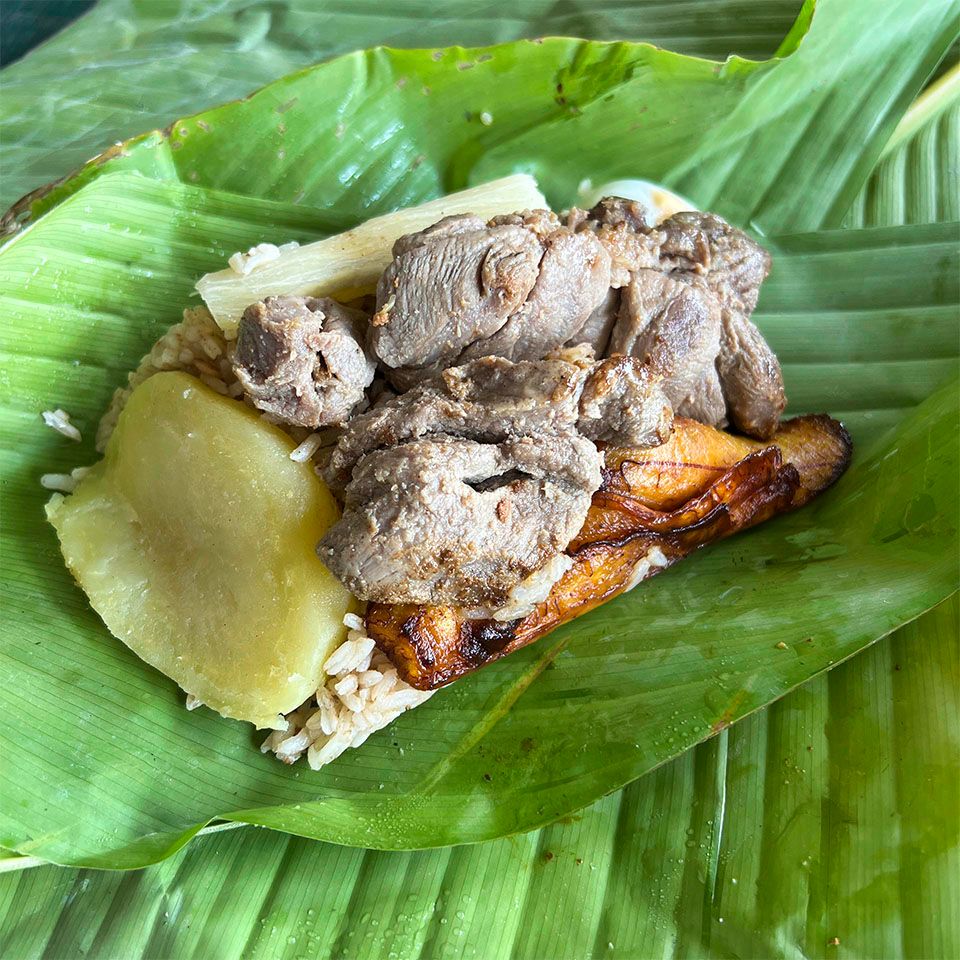
The kitchen is basic but one upgrade has been a potable water supply – something not to be taken lightly.
The presentation was simple – a composed salad of tomato, cucumber (pepino), and onion. Inside the leaf wrapper was grilled pork on top of rice with potato, steamed yuca, and platano maduro. Like many of the meals I had here, it was under-salted and I would have like some hot sauce, which is not commonly found on Colombian tables.
After lunch we were treated to the Bautista family’s workshop where the basics of the construction of the Colombian reed hat (a cross between an cowboy hat and a Panama hat) was demonstrated. A mind boggling level of skill is involved, especially in the stitching holding everything together. It looked regular enough to be machine stitched, but it was all done by hand.
Then it was time to hop into the car and head to the final destination on the trip, Necocli, which is on the water.
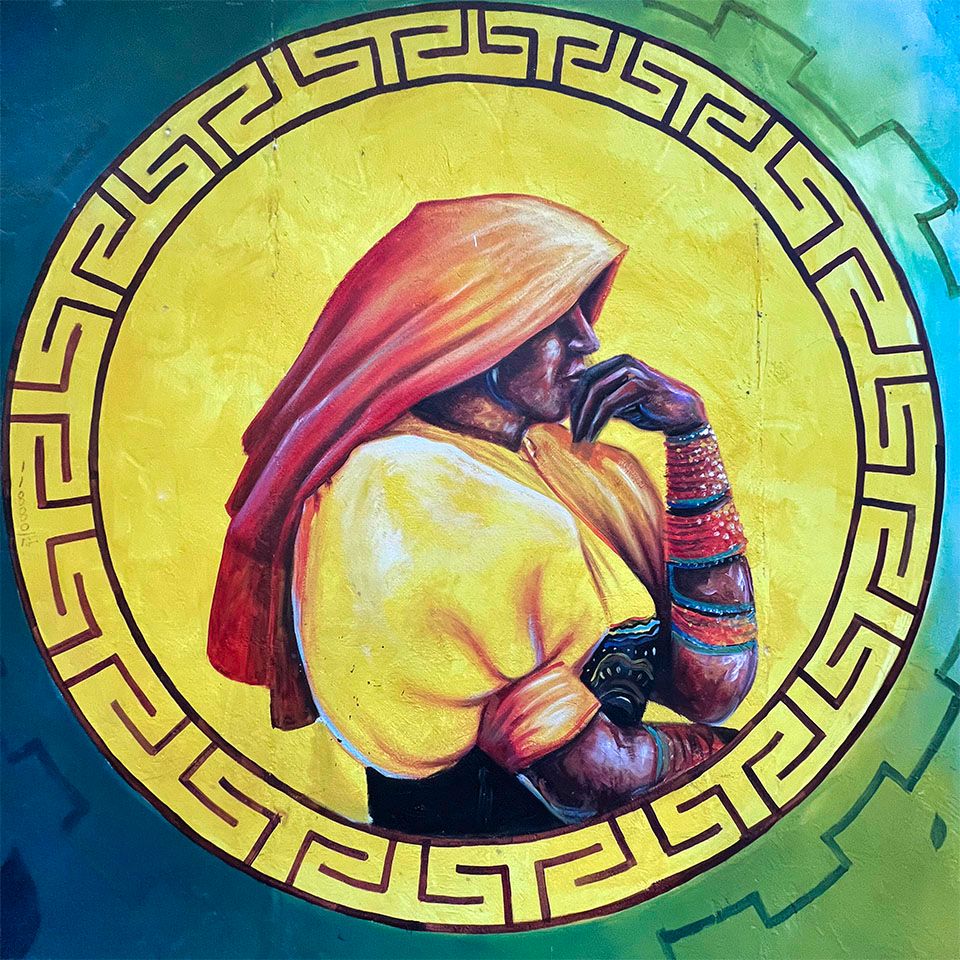
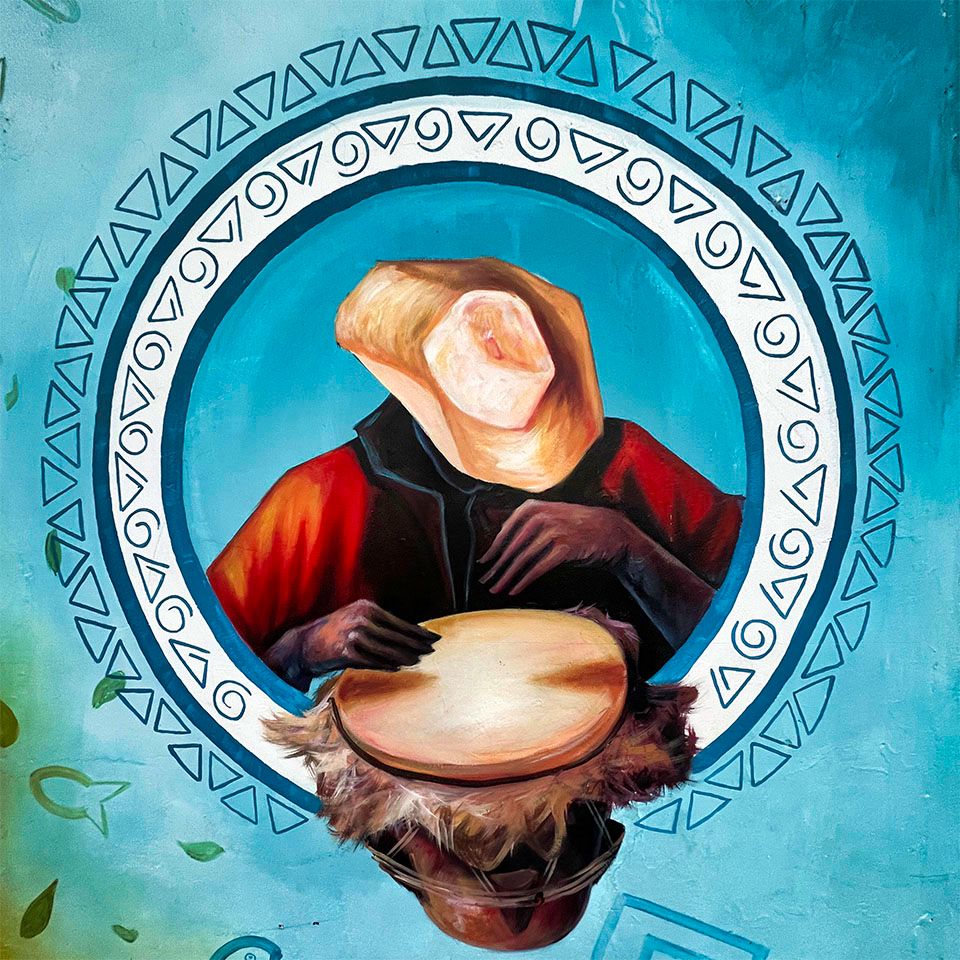
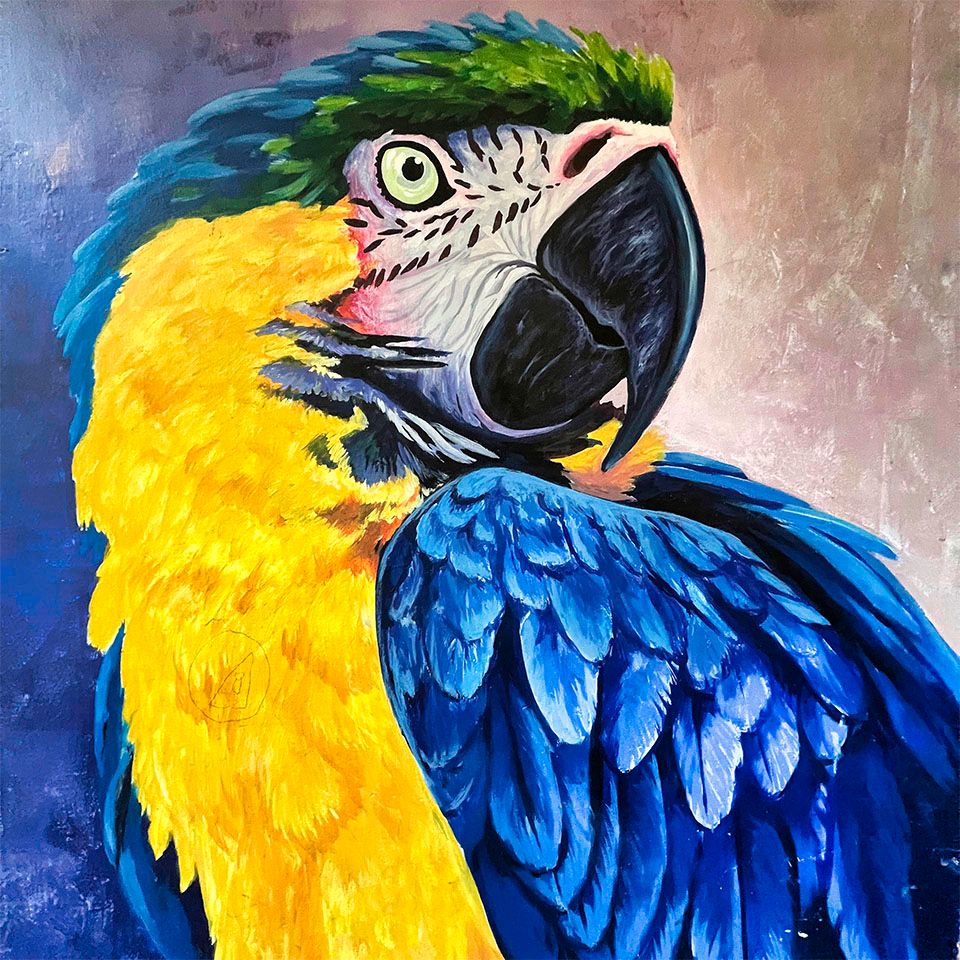
As in Caribia and many other regions of Colombia now relatively free from militia and narcotics-related violence, hope is being expressed in vivid colors in the architecture and in the murals that are everywhere.
Sunday
Sunday was to be a day of rest, with no need to set alarms. But on Saturday night it was decided to use the mornings to record interviews.
While waiting to set up at the location – a hotel and restaurant called Kulawala – I wandered down to the beach and on to their dock to take pictures of the Caribbean.

In Conclusion
My first trip to Colombia seemed like weeks rather than days because of the headlong-dash nature of the schedule trying to cram a kilo’s worth of activities into a one-livre sack. But it was fabulous, and it was made more interesting and enjoyable by the members of the team (Heather, Saida, Sara, Tom, Manuel, Juliana, Fabian, and others) who rode in the cars, and all of the people we interacted with along the way.
I know enough from other travels that I just scratched the surface of cocoa and chocolate culture in Colombia, so I want to return and engage in a ... more leisurely? ... exploration of the country. I also want to go for at least one extended swim in the Caribbean as the beaches were very attractive, as was the temperature of the water.
As we were deplaning at JFK this morning (about 5:00am) heading to immigration, Heather and I shared a quiet moment savoring the phrase, “The things we do for chocolate.”
Indeed.


